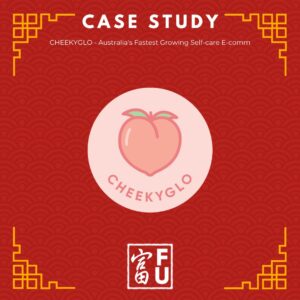UGC Helps Personify a Brand
User Generated Content (UGC) refers to any type of content that is created and shared by everyday users, rather than being produced by professional content creators. It includes photos, videos, reviews, blog posts, and social media posts. In recent years, UGC has become increasingly popular and influential in the digital age. This article explores the definition and importance of UGC, the power of UGC in marketing, how to encourage UGC, managing and moderating UGC, and case studies of successful UGC campaigns.
Understanding User Generated Content (UGC)
UGC is a powerful tool for brands and businesses to connect with their audiences on a deeper level. It allows consumers to become active participants in the brand story, fostering a sense of authenticity and trust. By tapping into the creativity and enthusiasm of their customers, companies can unlock the potential of UGC to enhance their marketing strategies.
Definition and Importance of UGC
User Generated Content refers to any form of content that is created and shared by consumers rather than by the brand itself. It can take many different forms, such as photos, videos, reviews, blog posts, and social media posts. UGC is important because it allows brands to showcase real-life experiences and perspectives, which can resonate more strongly with their target audience than traditional advertising.
When consumers create and share content about a brand, they are essentially acting as brand ambassadors. Their content serves as a testimonial, providing social proof and credibility to the brand. This can be particularly impactful in today’s digital era, where consumers heavily rely on reviews and recommendations from their peers before making purchasing decisions.
Moreover, UGC also helps to humanize brands. By showcasing content created by real people, brands can establish a more personal and relatable connection with their audience. This can help to build trust and loyalty, as consumers feel a sense of authenticity and transparency from the brand.
The Rise of UGC in the Digital Age
In the digital age, UGC has gained immense popularity due to the widespread use of social media platforms and the democratization of content creation. With just a smartphone, anyone can capture and share their experiences, opinions, and creativity with the world. This has empowered consumers and given them a voice, resulting in the rise of UGC as a powerful marketing tool.
Social media platforms like Instagram, Facebook, and YouTube have become breeding grounds for UGC. People are constantly sharing their daily lives, showcasing products they love, and expressing their opinions. Brands have recognized the potential of tapping into this vast pool of user-generated content to amplify their message and reach a wider audience.
One of the reasons why UGC is so influential is because it is perceived as more authentic and trustworthy. Consumers are more likely to trust the opinions and experiences of their peers rather than a brand’s self-promotion. UGC provides a way for brands to leverage the trust and credibility that consumers have in each other, creating a more genuine connection with their target audience.
Additionally, UGC also allows brands to gain valuable insights into their customers’ preferences, behaviours, and interests. By analyzing the content created by consumers, brands can gather data and feedback that can inform their marketing strategies and product development. This helps brands to stay relevant and adapt to the ever-changing needs and desires of their audience.
In conclusion, UGC has become an integral part of modern marketing strategies. It allows brands to tap into the creativity and enthusiasm of their customers, showcasing real-life experiences and perspectives. By leveraging UGC, brands can establish a more authentic and trustworthy connection with their audience, ultimately driving engagement, loyalty, and growth.
The Power of UGC in Marketing
When used effectively, UGC can enhance brand authenticity and build consumer trust. By showcasing real customers using and enjoying their products or services, brands can establish a genuine connection with their target audience. This level of authenticity can significantly impact consumers’ purchasing decisions and increase brand loyalty.
Enhancing Brand Authenticity through UGC
One of the major benefits of UGC is that it helps brands to appear more authentic to their customers. People tend to trust the opinions and experiences of other consumers more than they trust traditional advertising. By promoting UGC, brands can show their customers that they value their opinions and experiences, thereby building a stronger relationship based on trust.
When a brand incorporates UGC into their marketing strategy, it allows them to tap into the power of real-life experiences. Customers can share their stories, photos, and videos, providing an authentic representation of how the brand’s products or services have positively impacted their lives. This transparency creates a sense of trust and credibility, as consumers can see that the brand is not just relying on polished advertisements, but rather on the genuine satisfaction of its customers.
Furthermore, UGC allows brands to showcase the diversity and inclusivity of their customer base. By featuring a wide range of individuals in their marketing materials, brands can demonstrate that their products or services are for everyone. This inclusive approach not only enhances brand authenticity but also helps to build a strong sense of community among customers.
UGC and Consumer Trust
Consumer trust is crucial in the digital age, where there is a wealth of information available at people’s fingertips. UGC acts as social proof, demonstrating that other people have had positive experiences with a brand’s products or services. When consumers see real people sharing their positive experiences, it increases their trust in the brand and makes them more likely to make a purchase.
Moreover, UGC fosters a sense of authenticity and transparency that traditional advertising often lacks. Consumers are becoming increasingly sceptical of polished advertisements that seem too good to be true. By incorporating UGC into their marketing efforts, brands can break through this scepticism and establish a genuine connection with their target audience.
UGC also provides an opportunity for brands to engage with their customers on a deeper level. When brands encourage customers to share their experiences, they are inviting them to become active participants in the brand’s story. This level of engagement not only strengthens the bond between the brand and its customers but also creates a sense of community among users who share similar experiences and interests.
In conclusion, UGC is a powerful tool that can greatly enhance a brand’s authenticity and build consumer trust. By incorporating real-life experiences and showcasing the diversity of their customer base, brands can establish a genuine connection with their audience. Additionally, UGC acts as social proof, increasing consumer trust and making them more likely to make a purchase. Embracing UGC in marketing efforts allows brands to tap into the power of authenticity, transparency, and community-building, ultimately leading to increased brand loyalty and customer satisfaction.
How to Encourage User-Generated Content (UGC)
Encouraging user-generated content requires a thoughtful approach and strategic planning. Brands need to create engaging social media campaigns, leverage contests and giveaways, and provide incentives to motivate their customers to participate in creating and sharing UGC.
Creating engaging social media campaigns is a crucial step in encouraging UGC. Social media platforms offer a unique opportunity for brands to engage with their audience and inspire them to share their experiences and opinions. Brands can design interactive and compelling campaigns that encourage users to share photos or videos of themselves using the brand’s products. By running hashtag challenges, brands can motivate users to create their own content around a specific theme, generating a sense of community and creativity.
Leveraging contests and giveaways is another effective method to encourage UGC. Brands can create competitions where users have to submit UGC in order to participate and have a chance to win exciting prizes. This not only motivates users to create content but also generates excitement and buzz around the brand. Contests and giveaways can significantly increase brand awareness and engagement as users actively participate to win rewards.
In addition to social media campaigns and contests, brands can provide incentives to further encourage UGC. For example, offering exclusive discounts or rewards to customers who share their experiences or opinions can be a powerful motivator. By recognizing and rewarding users for their contributions, brands can foster a sense of loyalty and encourage ongoing engagement.
Moreover, brands can collaborate with influencers or brand ambassadors to promote UGC. Influencers have a strong following and can inspire their audience to create and share content related to the brand. By partnering with influencers, brands can tap into their creativity and reach a wider audience, thus increasing the chances of UGC.
Furthermore, brands should actively engage with the UGC created by their customers. Responding to and sharing user-generated content not only shows appreciation but also encourages others to participate. Brands can feature UGC on their website or social media platforms, showcasing the creativity and loyalty of their customers. This not only validates the efforts of users but also inspires others to create and share their own content.
In conclusion, encouraging user-generated content requires a multifaceted approach. Brands should focus on creating engaging social media campaigns, leveraging contests and giveaways, providing incentives, collaborating with influencers, and actively engaging with the UGC. By implementing these strategies, brands can foster a vibrant community of content creators and brand advocates, thereby enhancing brand awareness and engagement.
Managing and Moderating UGC
While UGC can be incredibly beneficial, brands also need to manage and moderate it effectively. This involves setting clear guidelines for UGC and dealing with any negative content that may arise.
Setting Guidelines for UGC
Brands should establish clear guidelines for UGC to ensure that the content being shared aligns with their brand values and does not violate any legal or ethical standards. This can include guidelines on appropriate language, content themes, copyright issues, and disclosure requirements.
Dealing with Negative UGC
Inevitably, there may be instances where negative UGC arises. Brands need to approach this situation with caution and professionalism. It’s important to address any concerns or complaints promptly and in a transparent manner. This can help mitigate potential damage to the brand’s reputation and turn a negative experience into an opportunity for improvement.
Case Studies of Successful UGC Campaigns
Looking at successful UGC campaigns can provide valuable insights and inspiration for brands looking to unlock the potential of UGC.
Coca-Cola’s “Share a Coke” Campaign
In 2011, Coca-Cola launched the “Share a Coke” campaign, replacing its iconic logo with popular names and phrases on its bottles and cans. This campaign encouraged consumers to share photos of themselves with their personalized Coca-Cola products on social media using the hashtag #shareacoke. The campaign was a massive success, generating millions of UGC posts and significantly increasing brand awareness and engagement.
GoPro’s User-Submitted Videos
GoPro, a brand known for its action cameras, has leveraged UGC in a powerful way. By showcasing user-submitted videos on their website and social media channels, GoPro has been able to highlight the unique perspectives and adventures of its customers. This UGC not only promotes the brand but also inspires others to go on their own exciting journeys and capture them using GoPro cameras.
In conclusion, UGC has the potential to unlock new opportunities for brands to connect with their audience and build authenticity. By understanding the definition and importance of UGC, harnessing its power in marketing, encouraging its creation, effectively managing and moderating it, and drawing inspiration from successful case studies, brands can tap into the incredible potential of UGC and take their marketing strategies to the next level.
Sometimes life is easier when you gain other perspectives, especially authentic ones generated by your biggest fans – your loyal customers. Try to find incentives for UGC creation and allow your best customers to do the selling for you.




